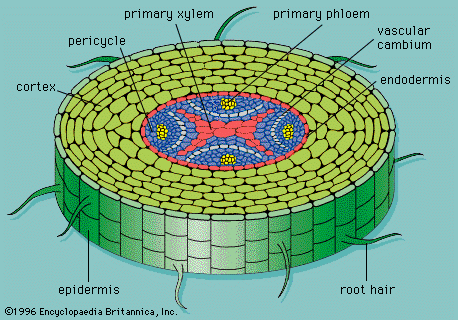Introduction
Transpiration
Root pressure – The cohesion tension hypothesis
Investigating transport in plants
Reaching the endodermis, water then enters the xylem. The xylem is a tissue of dead cells which contributes to the vascular system of plants by being the transportation medium for water and dissolved mineral ions. The xylem brings them to the leaves and plants’ other organs.
There are two different pathways that water uses in order to reach the xylem:
1. The apoplast pathway whereby water slaloms between cell walls and the spaces in between, without passing directly through live tissue; this accounts for 90% of water uptake.
2. The symplast pathway whereby water goes straight through living tissue i.e. the cells in the cortex, and into the xylem; this accounts for only 10% of water uptake.
Basically, the symplast pathway is just way simpler.
Transpiration
Transpiration is water loss through the parts of a plant which are found above soil level i.e. not the roots. As water streams through a plant, transpiration affects the speed of the stream. Increased transpiration will lead to a quicker uptake of water through the roots to maintain the water flow throughout the plant. So what affects transpiration?
1. Light causes stomata to open, resulting in increased water loss (transpiration).

